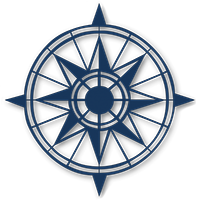My Skills
Whether in production environments, research labs, or creative experiments, I’ve developed a hands-on fluency across a wide technical landscape. Take a deeper look at the tools, systems, and languages I’ve worked with, my proficiency with them, and some insights into how I’ve used them in various projects.
 Legend
Legend
-
Learning (0–29%): Early Exploration
-
Basic (30–49%): Limited Use
-
Intermediate (50–65%): Practical, Hands-on Experience
-
Proficient (66–80%): Confident and Effective
-
Expert (81–100%): Deep Mastery
Programming, Scripting and Configuration
For me, code has always been more than just syntax — it’s a tool for clarity, control, and creative problem-solving. Whether automating daily tasks with Bash, writing Docker Compose files to orchestrate services, or building machine learning pprojects with scikit-learn, programming, scripting and configuration are part of my everyday toolkit.
I don’t code for the sake of it — I code to make things work better: to reduce friction, solve real-life problems, and free up time for more meaningful work. From quick one-liners to multi-file projects, I bring a pragmatic mindset that’s always grounded in purpose.
Web Development
For years I have found myself putting my front-end and back-end web development skills front and center: both as a developer for my own projects (e.g. this website, or my father’s remembrance site), and as the manager of teams working on intricate web portals and applications (e.g. Debt Collective, FMK).
Hardware / Making / IoT
At heart, I really love hardware. The first computer I ever had that was 100% for my own personal use was an Intel 486 DX2 66 MHz system by Micron computers. Then, the first system I fully built myself was an AMD K6-2. Since then I’ve worked with all manner of SBCs and microcontrollers for various IoT projects, countless routers, hubs, switches, WAPs and more.
AI
In the last few years the power and promise of AI, ML, Generative Systems, and LLMs has opened the door to once undreamed of possibilities. But, keeping ahead in this ever-changing landscape is as demanding as it is rewarding.
Luckily, at the Center for Digital Curiosity I have created a vehicle for experimenting, learning and encouraging young researchers to unlock the potential of these technologies — all while keeping a critical understanding of what these tools mean for both technological and social systems.
Networking and Cloud Administration
Funny enough, one of the driving forces behind my love of computer networking was the infamous “LAN Party” of the late 1990s. My friends and I would all gather at someone’s house, each lugging a CRT monitor and a tower PC, and I was always the one wiring everything together to make the magic happen.
From hubs to switches, 10/100 to 10GbE, and basic registrar DNS setups to AWS Route 53, the core lesson for me has been: the more things change, the more they stay the same. Master the fundamentals and you’ll understand their application anywhere you go!
Virtualization and Containerization
Before everything moved to the cloud, I was already spinning up VMs to test out software, test-drive ideas and isolate services. Tools like VirtualBox and Hyper-V taught me early on how to build flexible, modular environments — something that translated naturally into the world of containers.
Today, Docker is part of my daily workflow. Whether I’m deploying multi-container stacks with docker-compose, optimizing persistent volumes, or managing services through Portainer, I approach containerization with both efficiency and clarity. I value reproducibility, low overhead, and the ability to version-control infrastructure the same way we do code.
Whether it’s creating lightweight sandboxes for experimentation or orchestrating self-hosted applications on a home lab network, virtualization and containerization are core tools in my problem-solving arsenal!
Project Management and Leadership
Some of my best lessons in leadership didn’t come from a boardroom or a classroom. Instead, they came from late-night troubleshooting sessions, activist campaigns, and multi-stakeholder academic projects that refused to fit inside neat little boxes. Over the years, I’ve learned that leading isn’t about orders or micromanaging — it’s about clarity, trust, and organic momentum.
Whether coordinating a conference with international speakers, guiding a dev team through a Docker migration, or building consensus across departments in a university, I bring a calm, solutions-oriented mindset to complex challenges.